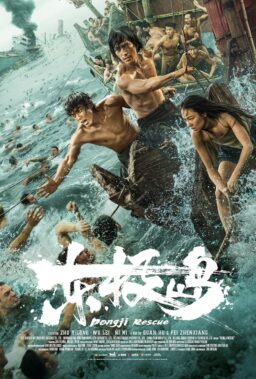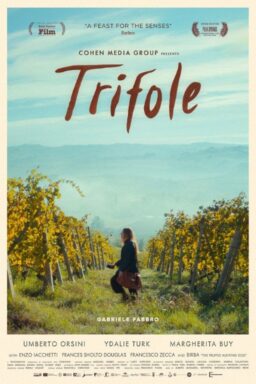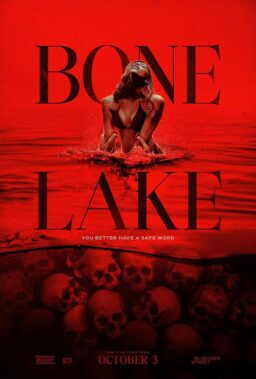
I’ve never been good with small talk. In those corporate conferences with high ceilings and manufactured friendships, I used to admire those high-speed networkers who spun small talk and smooth talk as they worked a room. I don’t play golf. I don’t drink booze. I’m a fair weather sports fan. If you were to stand alone in an elevator with me, you’d probably hear me breathe as I stared at the floor. Further, if you want to kill an otherwise lively conversation among a bunch of decreasingly sober corporate executives in ill-fitted khakis, sport coats, and crooked “Hi My Name is” name-tags, then make the mistake that I keep making: tell them that you’re an expert on religion. The crowd in front of you will split apart faster than the Red Sea. And, perhaps that is why I was never invited by my colleagues to go on those weekend warrior trips, like the characters in John Boorman’s forty year old “Deliverance” (1972). This is the story of four confident suburban businessmen looking to raft to the bottom of a river. Along the way, the experience pounds the hell out of them.
We don’t know how these guys are actually friends. They do not work together. They obviously did not go to the same college or gym. But, they probably met each other at one of those corporate parties, standing at the end of the room opposite the guy talking about religion. The four men are cast in such perfect harmony. Ronnie Cox is the bespectacled stoic, of light voice, tall stance and congenial demeanor. Jon Voight is the introvert whose paralyzing caution reveals a self-imposed prison of fear of something deep. Burt Reynolds is separated from agriculture by a generation, and would become a shaman had the attractions of commercial life not held him back. Ned Beatty pretends more bravado in his tongue than in his slow sow-like posture. The four are rowing through this river, hoping to conquer it before the approaching bulldozers build a dam and upset everything.





And, at one level, that is the story of “Deliverance.” Four men from comfortable lives hope to flex their socially constructed masculinity by exercising dominion over Mother Nature. In some strange way, I bet this film is a precursor to all those later frat-pack-type movies, like “The Hangover” (2009) with Las Vegas and its neon clowns substituting for the Cahulawassee River and its inbreeds. The goal is to venture into unknown territory, behave like insiders, and live to tell others about it. On that note, I think I really fail at small talk because most of my adventures take place in a classroom. In any case, we can gather from the foreboding explosion in the stone quarry at the beginning of the film that they will instead find themselves submitting to the laws of the jungle, hoping to survive without broken body or souls. Even the greenery of the film is not quite green. Vilmos Zsigmond’s cinematography has washed out the colors, so that everything seems just a bit grey. Even when it is daylight, things feel a bit dark.
At another level, that explosion at that stone quarry recalls what is now more a cliché about Americana in our popular pursuit for all things green, but in the post-Great Gatsby era was a burgeoning conversation about sprawl and suburban utopias. This particular America is on the one hand a land of plush colorful fields, fertile river valleys, and endless flora and fauna, that is all getting systematically devoured and replaced with 24 Hour shopping malls, cracking parking lots, and discarded remote controls. I am seeing it happen right in front of me. One of the last remaining forest preserves in my town has been chopped and gutted. The dozers have begun paving asphalt in what will probably become yet another neighborhood and strip malls. Twenty years ago, you could smell the manure from the farms, not that that is a pleasant thing. Now, most of the farms have been replaced by dry cleaners, liquor stores, and pharmacies. The result is that deer from the forest preserves have been so displaced that we now consider them our pests. New York City has its giant killer rats; we have deer.
Meanwhile, America is, on the other hand, the land of Walden, where we escape the noise of the subway, the aroma of exhaust pipes and the soot of coffee beans soaking through the sidewalks of urban life, escaping with hope into the organic spiritual renewal of untouched nature. Every culture clings in its imagination to some inconsistent symbol of ancient purity. Among the Arabs we see this reverence for pastoral nomads – the Bedouins – that seem to embody ideals of a chivalry derived from an innate connection with the open earth. In symbol, the Bedouins possess a lifestyle not bound by the restrictions of petty ambitions, living free to inhale the wide air with full lungs.
We in America, at least in the Midwest, cling to the sense of the organic, as though it grows naturally from those remaining patches of crowded forests, watered through gentle, sliding springs of pure shiny transparency. The idea is that if we connect to these primordial “roots,” we connect with our inner selves, and find birth and strength and that sort of thing. And, yes, many of the Bedouins have become entrepreneurs, and most of our American forest preserves have become houses with granite countertops and underground plumbing. But, the symbols still hold powerful sway in our world views, in our quests for pre-homogenized purity. Interestingly, suburban sprawl is itself an extension of Walden, seeking to distance ourselves from the clanking corruption of the big city, moving a half step closer to the pond. In the same way, so too is the organic food movement the same thing. It is an attempt to escape the corruptions of corporate constructed chemicals by partaking of the purity of the wholesome.
In any case, in this bipolar American cultural outlook, this film positions itself two ways. First, it places our characters right at that edge between these worlds. They are rowing through this thick river now, because very soon, this whole region will get replaced by subdivisions full of identical houses and every sort of department store. But, this film also tells us something else: that nature that we idealize as a place of tranquil ripples, singing birds, and gently falling leaves is a wilderness more hostile and frightening than anything in the civilized city.

“Deliverance” is most famous for two scenes. First, the Dueling Banjos. A boy from the hills plays a banjo, while a man from the city (Cox) plays a guitar. They begin a friendly back and forth volley with their chords, evolving into a duet, that quickly transforms into a duel, and the boy wins. Again, foreshadowing that in trying to tame this river, our four band mates will not be able to keep their heads above water.
And second, “Squeal like a pig.” I won’t go into the details of this scene except to tell you that minorities are not the only people portrayed with horrible, but influential stereotypes in movies. After watching this movie as a kid, I’d been afraid of most every single white guy south of Interstate 80. When you grow up as a brown kid in Suburban Chicago, television shows like “The Andy Griffith Show” and “The Dukes of Hazzard” make you think that all rural White people are gentle, friendly, and a bit quirky. Then, movies like “Deliverance” make you assume that all rural White people are members of the Klan (even though there is no mention of the Klan in this film). Something just didn’t seem healthy to me about White people living in the woods, unless they were friars in Europe. As an older youth, feeling a bit brave, when imbeciles would mockingly ask me (Muslim) if I beat my wife, movies like this would invite me to ask them if they’re married to their sisters. You’ll notice that I used the plural here, because it happened more than once. By the way, the term “White People” doesn’t win too many friends in corporate events. Or in weddings. You live and you learn.

But, that “Squeal like a pig” moment travels further with me. I screened this movie on the first day of an undergrad class, with the goal being to explore our interactions with Nature. As that scene reached its low point (“climax” might not be the best word here), a student ran out of the room. Another student covered her eyes and started crying. A few days later, a parent called me up asking why I’m showing these movies. It was a class on Islamic mysticism. Let’s just say I don’t teach at that school anymore. Still, you live and you learn. But, the point of the exercise is that in some schools of mysticism, the goal is to connect with the Divine. In others, the goal is to connect to the Self. In others, the goal is to connect with “nature.” Some Sufis go so far as to say that our relationship with nature is an indicator of our relationship with our selves and with Divinity. Meaning, this American relationship with nature, which paradoxically presents nature as something to be casually exhausted and devoured, yet something precious enough to be preserved is also a lesson in the condition of our spirituality. We tend to speak the same way about our bodies.
And John Boorman’s explorations in nature also fascinate me. For example, in “Beyond Rangoon” (1995), Rosanna Arquette seeks to cope with tragedy by losing herself and finding herself in the forests of Burma/Myanmar at the time that the pro-democracy movement of Aung San Suu Kyi gains momentum in the cities. Here, nature is a place of silence, escape, mystery, and healing. In “The Emerald Forest” (1985), Powers Boothe first is a businessman devouring nature by building a dam. Soon, however, he is a visitor, seeking to find his kidnapped son. Nature, here, is a place of treasures, vengeance, anger, beauty, and a unified personality.

Also, at the ends of “Deliverance,” we also have one interesting point. It is construction (at the beginning) that is leading to the destruction of this river. But, this construction is also displacing the people living along the river, down to its ends. At the bottom of the valley, we find a small town of pious, generous people moving their sacred vessels – the Church and the cemetery – to safe pastures. And that perhaps is another American moment as relevant now as it was forty years ago, that with this type of growth of business, all things sacred: nature, the temple, the dead, and of course, humanity are either consumed, or pushed away. Now, it seems as though every other Hollywood movie presents businessmen as greedy villains. But, in “Deliverance,” the point is a bit more subtle, showing that one force displaces another force, even though it might be really far away, perhaps the way the butterfly’s wings are said to affect hurricanes, or Archimedes sitting in his bathtub watching the water overflow. If the law of the jungle in “Deliverance” was a sort of survival of the fittest at a micro-level, then at a macro-level, we are all in some sort of ongoing process of displacement.

I have to admit that I did get invited by a colleague – in the work of religion – to go rafting through some river in Colorado. When we talk on the phone, he usually carries the conversation because I’m so poor with small talk. In any case, I told him that I would consider the trip if he would first watch this movie. He did. I was hoping that the film would frighten him. Instead, we got into a long conversation about the religious implications of the movie. No surprise. Naturally, (pun intended) he still wants to go.











